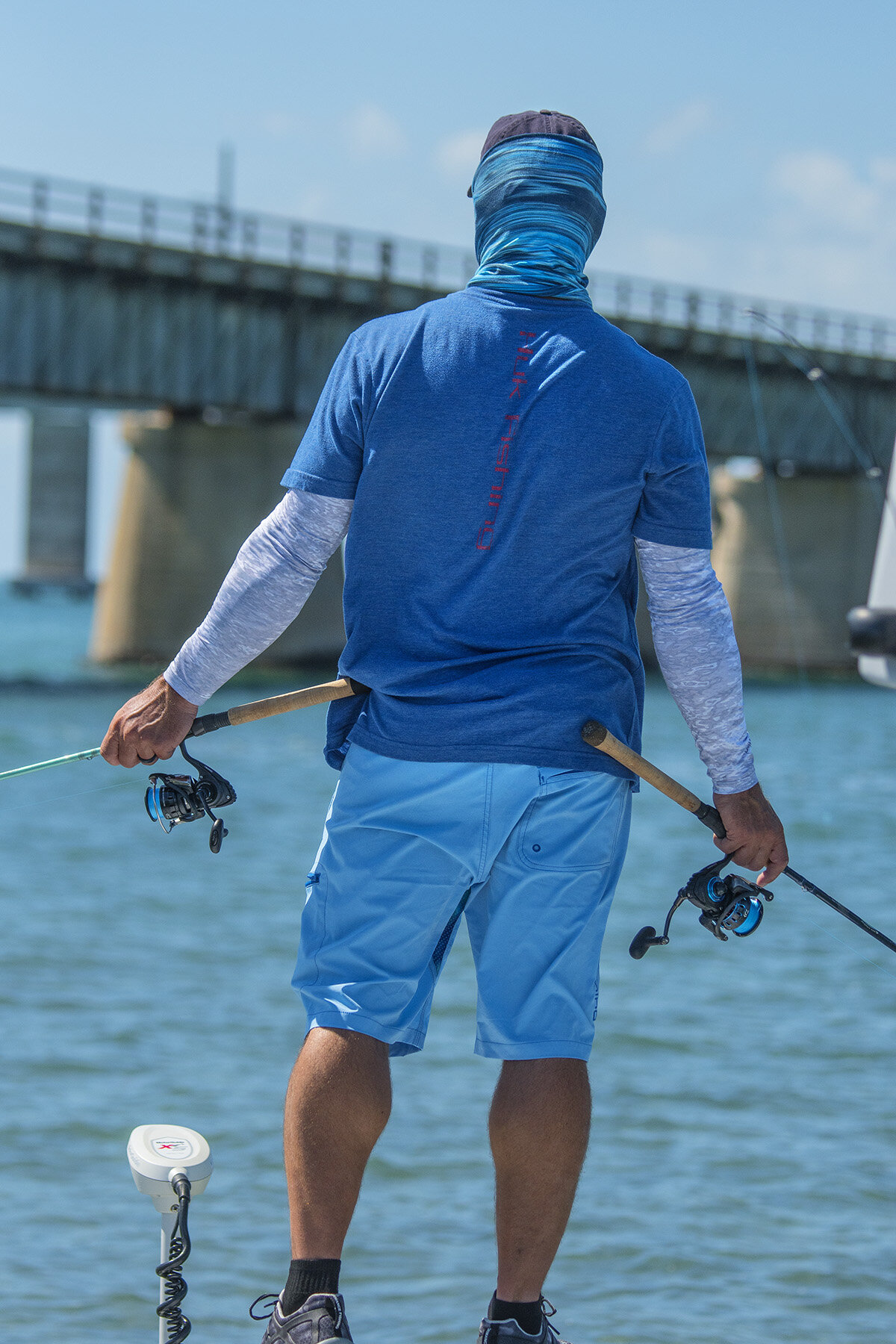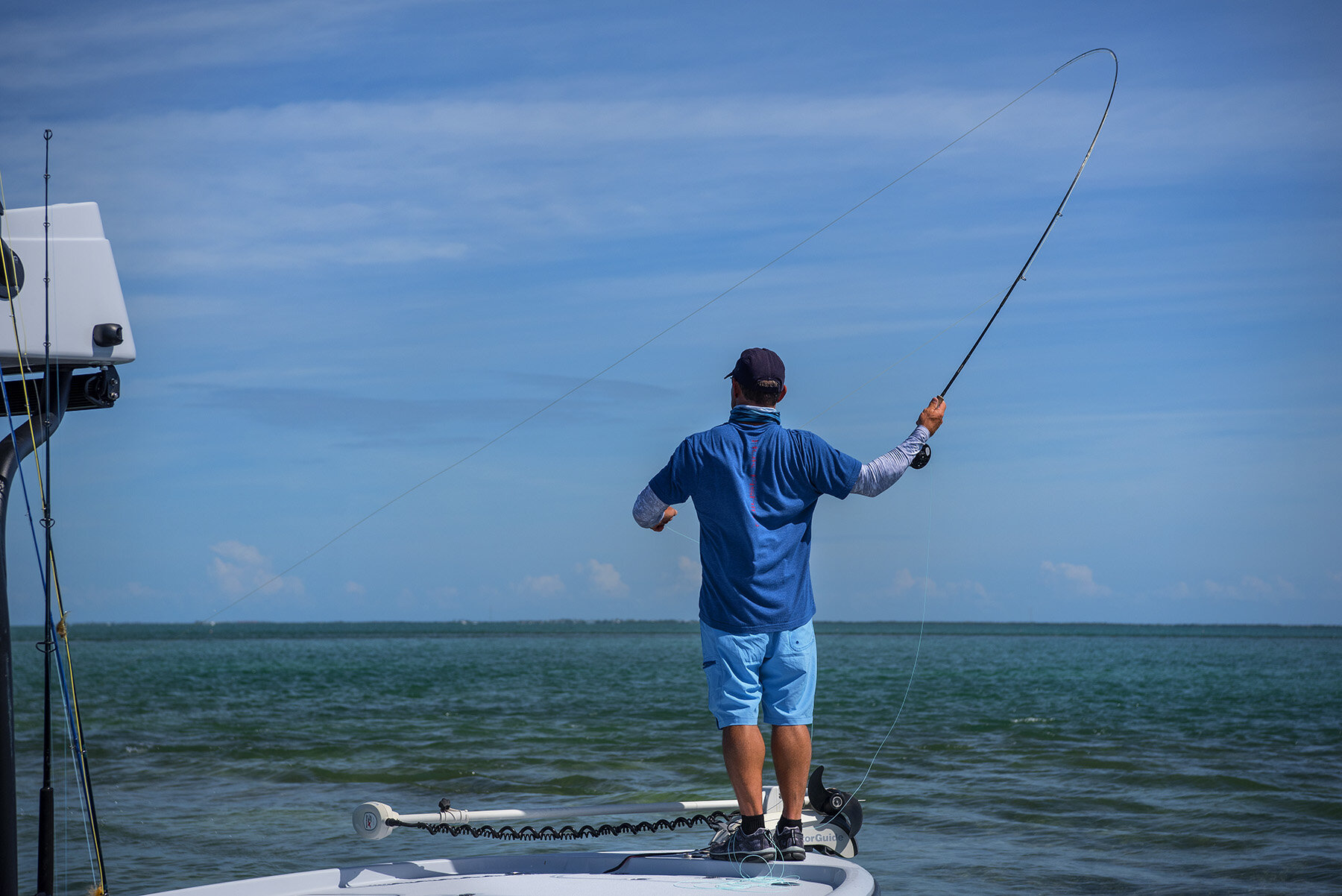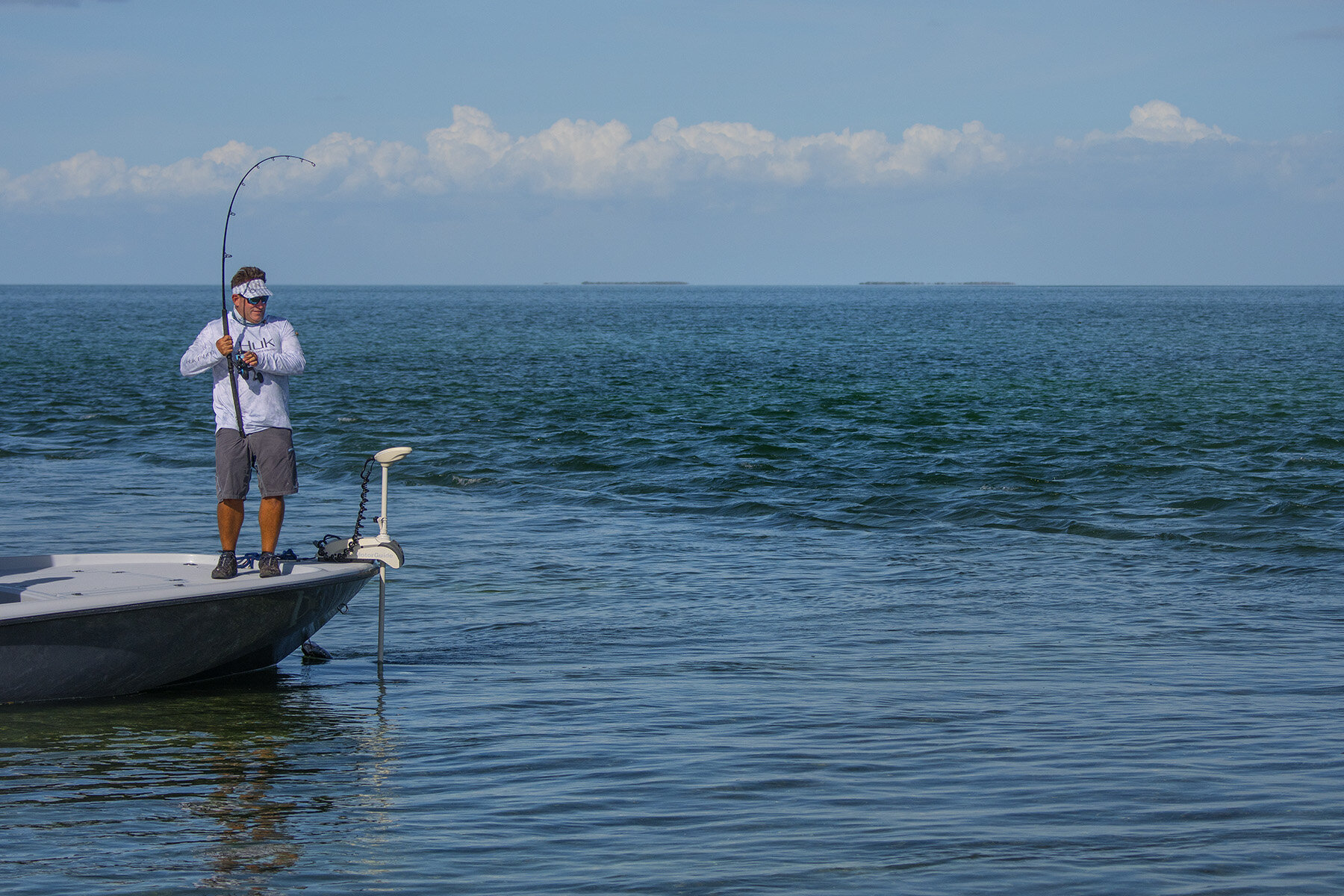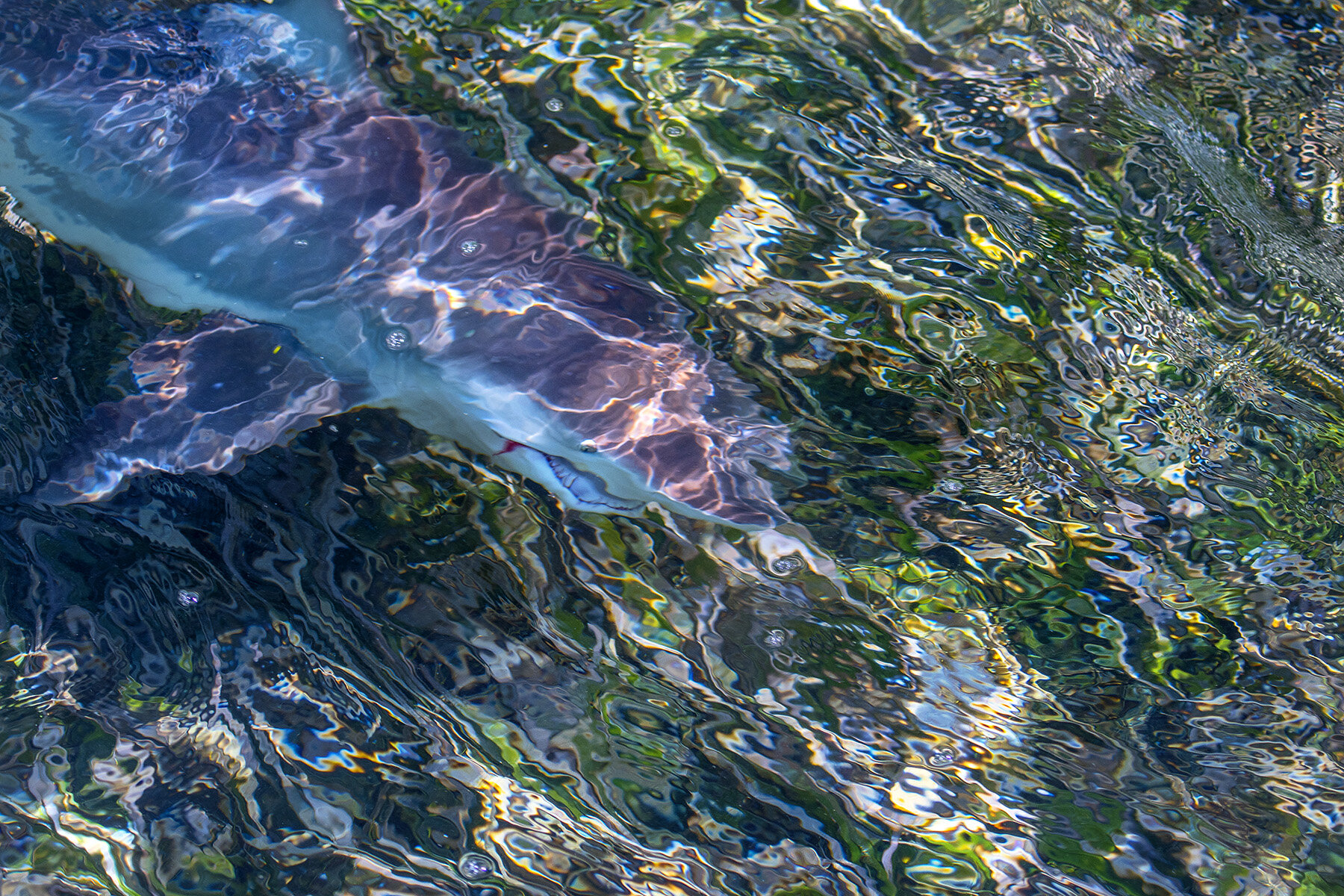How to Fly Fish For Sharks
written by Evan Anderson
Adaptability is one of the most valuable traits of an angler, as demonstrated by Captains Rich Tudor and Tom Rowland of Saltwater Experience. “You can go out, and in a lot of cases we do, where we’re in a bonefish tournament or we have someone who wants to fish for a very certain thing,” says Rowland, “And no matter what, we’re doing this. That’s one style of fishing. The other style of fishing is, ‘Hey look, the conditions have changed a little bit, let’s just go out and explore.” In this episode, Tudor and Rowland get set up to fish for some tarpon. But when, instead of tarpon, they catch barracudas their plan shifts to something equally as exciting: Shark fishing. It’s a thrill ride as they try different tactics on both spin and fly rods out in the flats. Here are 3 fly fishing tips for catching blacktip sharks.
GOOD TARPON PRACTICE
As Rowland preps their barracuda for chum, Tudor drives the two captains out to the flats just offshore from where they caught their ‘cudas. “Earlier in the week I had seen blacktips swarming there,” says Tudor, “I knew they’d be swarming with that [barracuda] for chum.” Blacktip sharks are an inshore fish, tending to prefer the shallower flats to the open ocean. Not to worry for any swimmers out there, though. Blacktips are not particularly aggressive towards humans.
Blacktip sharks are impressive athletes, according to Tudor and Rowland. “It’s probably the most athletic of all our sharks,” says Rowland, “Certainly the best inshore athlete.” Built like a torpedo and rippling with muscle, the blacktip is an incredibly fast and powerful shark. Rowland recommends fishing for blacktips as good practice for tarpon fishing. “One of the things that I like most about the blacktip and shark fishing,” says Rowland, “is that for someone who hasn’t had an opportunity to catch a lot of those fish it’s a great learning situation. Because you’re gonna learn more about pulling on a big fish by catching those and you’re gonna get so much more experience.” He continues, adding that a blacktip fights “every bit as hard as a tarpon,” and that “You’re gonna get a few more opportunities to hook a fish of that size and that caliber than you would if we were tarpon fishing...If you get on a really hot blacktip bite, you could catch 20.”
“They fight every bit as hard as a tarpon.”
ACTION BRINGS MORE ACTION
As the boat pulls up to the fishing spot, Tudor and Rowland drop their chum into the water and get set. It’s a beautifully sunny day and our two captains are thankful for their Buff Headwear to keep the sun off their necks. As the blood and chum hits the water, it’s not long before the sharks come rolling in. “Man it did not take long,” says Tudor, “It was almost instantaneous.”
Rowland gets his fly rod and begins casting, set on catching a shark on a fly today. After a few casts, he asks Tudor to start throwing his line in on a spin rod. “I started thinking, if you go ahead and start catching a couple, that’s gonna fire them up even more,” says Rowland, “Action brings more action.” And it proves true today. Tudor’s hook gets bit seconds after touching the water, leading to an awesome fight reminiscent of a marlin or bonefish. “Look at him jumping!” he exclaims, “He’s like a blue marlin, dude!”
@ SE Multimedia 2019
““A lot of times the disappointment leads to a better adventure.””
@ SE Multimedia 2019
CATCHING BLACKTIP ON A FLY
Once Tudor gets hooked up, Rowland’s saying definitely proves true with the sharks becoming more and more aggressive. But he still can’t quite get one to bite his fly. So he decides to mix it up. “There are a couple of different ways that I’ve had success catching sharks on fly,” he says, “One is to throw it well out in front of them and let it swing into them...as they’re going for the chum. Sometimes you can get them to bite like that. But it wasn’t working like that that day. So I’m gonna try a different approach and that is casting very very close to them, just plopping it right in front of them and [giving it] one strip.”
His new strategy proves successful, with a shark hammering his fly on the first cast. He explains through his Buff, wrapped around his head and neck, “We’re using standard fly rods, same kind of fly setup that you would use for tarpon. It’s a 9-foot 9-weight St. Croix SOLE rod. I’ve got a floating line on there and for shark fishing you’re going to use the same basic leader, except at the end you need to use wire instead of the 80 lb monofilament.”
Tudor and Rowland can’t wipe the smiles off their faces as they load the boat back onto Tudor’s reliable B&W trailer hitch. “I’m glad the tarpon weren’t biting, that was a lot of fun!” says a grinning Tudor. Rowland remarks “A lot of times the disappointment leads to a better adventure.” As said previously, adaptability is a key skill to have in your tacklebox. “We moved on, used what we knew and used the opportunities there to really experience something pretty special, and I’m glad we did,” finishes Rowland.
Ready for an adventure? Check out the full episode below and watch Rowland’s incredible fight with a blacktip on a fly rod on S14:E9 of Saltwater Experience.


















